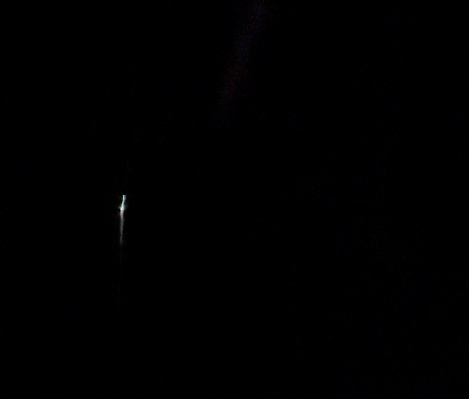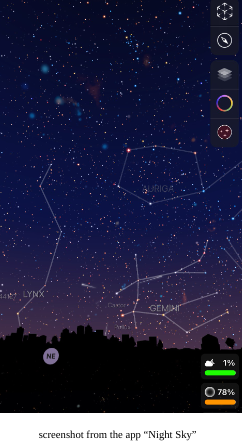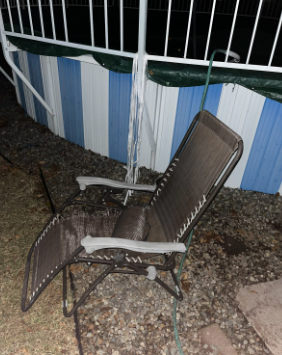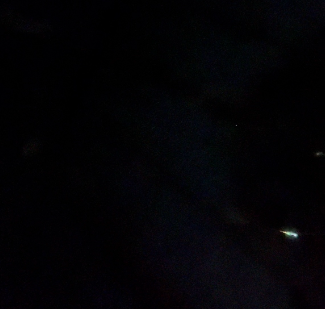
The annual Geminids meteor shower may have already peaked, but there is still time for you to view the largest meteor shower of the year. It consists of approximately 120 meteorids per hour radiating across the night sky.
What Exactly Is A Meteor Shower?
According to NASA, a meteor shower is a celestial event that occurs when the Earth passes the trail of debris left by a comet or asteroid. A meteor is pieces of rocks or ice that become ejected from a comet as they orbit around the sun, and not a “shooting star.”
They also can come in a multitude of colors which is caused by the chemical composition. For example; a reddish glow can be caused by atmospheric nitrogen or oxygen atoms, ionized calcium might add a violet hue, iron adds a yellow tint, and magnesium adds a bluish-green one.
A meteor shower is not as “rare” as you may believe it to be, as approximately 30 showers occur annually. In fact, five meteor showers have all peaked within the time school started this year – Draconid, Orionid, Northern Taurid, Leonid, and Andromedid. Some of these recurring showers have been around longer than 100 years. This includes the August Perseids meteor shower, which was first observed around 2000 years ago. The reason these showers are able to continue is because comets replenish the meteoroids for every passage around the sun.
Meteor showers are given their names from the constellation their radiant is located (area in the sky they show up). In this case, the shower is named after the constellation and zodiac sign, Gemini, which is composed of 85 different stars.
The sky was cloudless the night of Wednesday, December 13th and early morning of Thursday, December 14th, however the wind was strong and blowing directly into my eyes. Luckily for me, unlike the last meteor shower I viewed, Perseids, the meteors could be seen from any point during the night, and at a much higher rate. In fact, within a minute of setting up for watching the meteor shower, a long flash pierced through the night sky from the west, and it was only 8:30 pm.
I waited until 11:20 pm, as the sky could be as dark as possible to best see these soaring flashes of light. I waited and waited in the bitter cold, but unexpectedly the meteor showers did not come at the rate I thought It would. The meteors were projected to be an extremely high rate of 120 per hour, but within a little over an hour out there, I only gazed my eyes upon around five flashes of light and recorded one of them. But still determined to see more stars, I decided to try again the night of the 14th into the morning of the 15th to see if I could get some better luck.
I sat down in the old, reclining deck chair behind my pool, and I began stargazing for the 2nd consecutive night. The weather was more tolerable, still perfectly clear but this time without the face piercing wind. Once again I was only able to view about 5 stars for the hour and half I was out there, 3 of which I luckily caught on camera. Overall I say the experience was worth it, as there’s few things better than being out in the pitch black dark, not a sound to be heard, and seeing an alluring beacon of bright light rush across the sky.
 A Message and Tips For Other Star Gazers
A Message and Tips For Other Star Gazers
For anyone whose interest I peaked for astronomy while reading this article, here are a few tips I can provide to you. This is a no-brainer, but check the radar for cloud coverage. The more clouds, the less likely you are to see any meteors, and remember just because you may not see the shower on its peak date, you will not find much of a difference a day or two before or after it.
Also, not every meteor shower can be viewed at all times of the night/morning! Most, in fact, are best observed pre-dawn, but generally are all best viewed after midnight, when the sky is fully dark. However, it can take your eyes from 30 to 45 minutes to adjust to the night sky, so go outside around 11:00 pm. Also make sure you are dressing properly, have a comfortable flat surface to lay on if you do not want to lay on the ground, bring out a water bottle to stay hydrated, and snacks if you deem it necessary.
Try to not use your phone at all. I know for some people looking into an empty dark sky for a minute is absolutely boring, but any light source generated can blur your view of the impending meteors, and you will forget all about it when you see an alluring “shooting star” dash across the sky. However I would still bring it out, as using the compass app is helpful for determining your coordinates. Each meteor shower can be seen in a different direction, so make sure you search its general direction in the sky. It is also smart to download a live viewable astronomy app like Night Sky. This app also acts like a compass once in the spatial navigation mode, and can show all of the stars, planets, constellations and celestial objects of interest as they appear in the sky in real time. With this app you may find an object you might have once thought to be Jupiter, the moon of a planet, or the Andromeda Galaxy.
These meteor showers also produce different rates of stars per hour, so make sure you search up the approximate number of meteors that can be seen each hour. I personally would watch any meteor shower producing 20 or more per hour, however most do not, so make the determination yourself for what rate is “worth” seeing. Either way, seeing any zip across the sky is absolutely worth it.
Finally, be aware of the area in which you live. Light sources from your house, cars, street lamps, or other buildings in your neighborhood can blur your view of the meteors. If you are unable to see many stars in the sky you’re less likely to see any meteors as clearly, so the more populated areas will have a harder viewing time, and less will see objects better. My view has a high level of light pollution, so more than likely you will have a better view than I did, and probably would see more stars.
Closing Thoughts
If you were unaware about this meteor shower and want to experience it for yourself, do it. It is an experience you will not forget, especially if you catch as many meteors soaring after one another as I did. The next shower, Ursids, will peak the night of December 21st to the 22nd with 5 to 10 meteors per hour. However, if that shower does not seem to be worth staying out in the bitter cold for, then you can check the farmers almanac for 2024 to see the rates of meteors per minute and the dates they peak at. Happy stargazing!
Sources:
https://science.nasa.gov/solar-system/meteors-meteorites/geminids/



